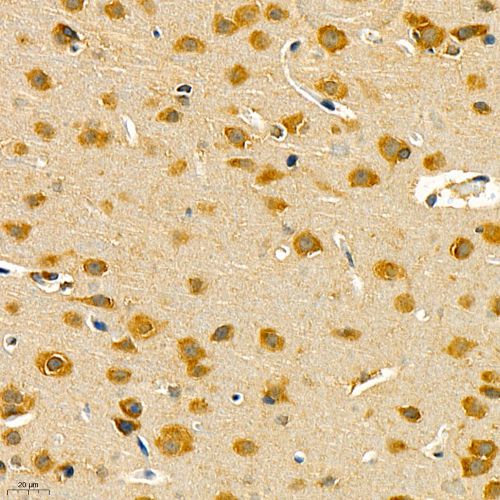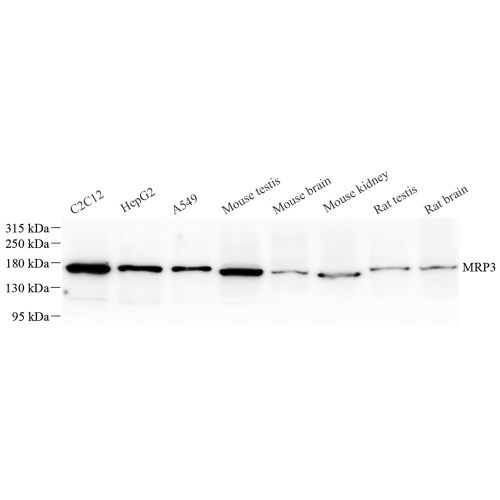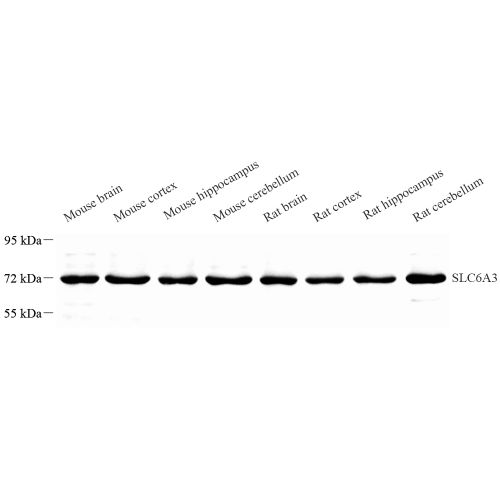服務(wù)熱線
400-1016-218


全國(guó)統(tǒng)一服務(wù)熱線
400-1016-218
科研好幫手 專業(yè)生產(chǎn)商
本公司產(chǎn)品僅供科研使用
您現(xiàn)在所在位置:主頁(yè) > 產(chǎn)品中心 > 抗體 >>一抗 >>通道蛋白 >> Anti -Kir2.1/BIK Rabbit pAb
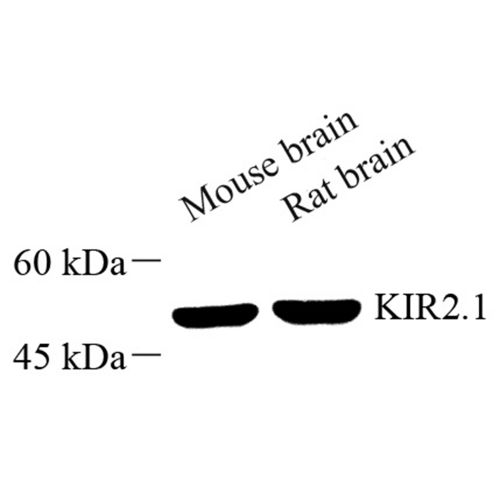

Product Information
|
Description |
BIK rabbit polyclonal antibody |
|
Protein full name |
Inward rectifier potassium channel 2 |
|
Synonyms |
Inward rectifier K(+) channel Kir2.1, IRK-1, Potassium channel, inwardly rectifying subfamily J member 2, Kcnj2, Irk1 |
|
Immunogen |
Recombinant protein corresponding to Mouse BIK |
|
Isotype |
IgG |
|
Purity |
Affinity purification |
|
Predicted MW. |
48 kDa |
|
Observed MW. |
55 kDa |
|
Uniprot ID |
P35561, Q64273 |
Applications
|
Applications |
Species |
Dilution |
Positive Sample |
|
WB |
Mouse, Rat |
1: 500-1: 1000 |
brain |
Background
KCNJ2, also named as HHBIRK1, HHIRK1, IRK1, KIR2.1, LQT7 and SQT3, belongs to the inward rectifier-type potassium channel family. KCNJ2 probably participates in establishing action potential waveform and excitability of neuronal and muscle tissues. Inward rectifier potassium channels are characterized by a greater tendency to allow potassium to flow into the cell rather than out of it. Their voltage dependence is regulated by the concentration of extracellular potassium; as external potassium is raised, the voltage range of the channel opening shifts to more positive voltages. The inward rectification is mainly due to the blockage of outward current by internal magnesium. KCNJ2 can be blocked by extracellular barium or cesium. Defects in KCNJ2 are the cause of long QT syndrome type 7 (LQT7). Defects in KCNJ2 are the cause of short QT syndrome type 3 (SQT3).
Images
|
|
Western blot analysis of KIR2.1 (GB111433) at dilution of 1: 500 |
Storage
| Storage | Store at -20 ℃ for one year. Avoid repeated freeze/thaw cycles. |
| Storage Buffer | PBS with 0.02%sodium azide,100 μg/ml BSA and 50% glycerol. |
NOTE:
1.This product is intended for research only.
2.This product is recommended to dilute with the Primary Antibody Dilution Buffer .
合肥萬(wàn)物生物科技有限公司
客服熱線:400-1016-218
QQ:355185756
地址:安徽省合肥市高新區(qū)黃山路602號(hào)合肥國(guó)家大學(xué)科技園A401室

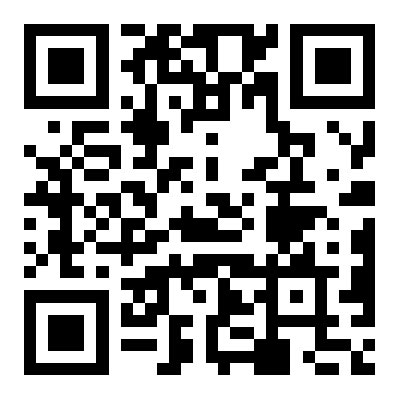

 關(guān)注微信公眾號(hào)
關(guān)注微信公眾號(hào)

